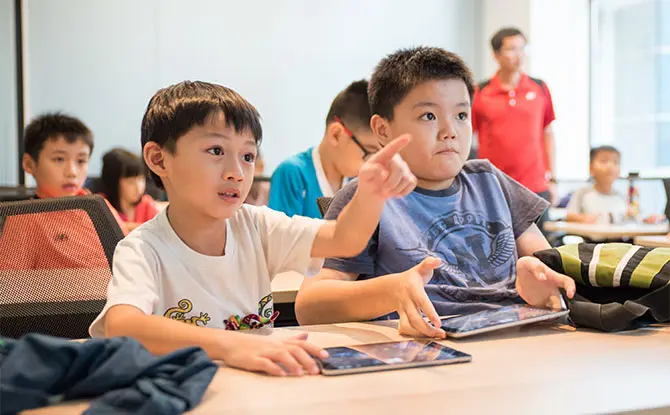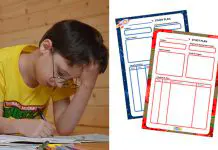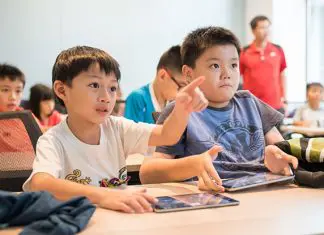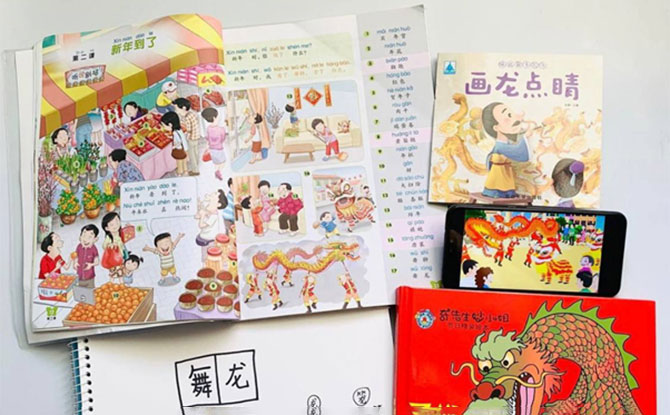
Most parents struggle with raising bilingual children at home, and wonder how we can support them even with our limited grasp of our Mother Tongue. How do we encourage bilingual learning at home? Linxin, founder of My Story Treasury, has tips for parents!
Tips On Bilingual Learning for Parents and My Story Treasury’s Journey
Tell us more about yourself and your journey in bilingual learning.
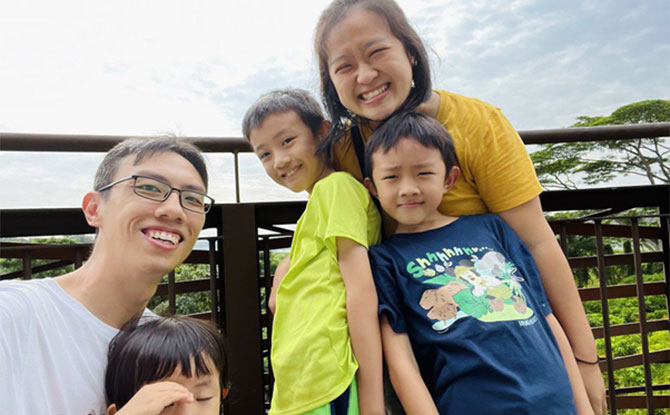
Hi, I’m Linxin! I’m a nurse by training, and in this season, I’m a stay at home mum to 3 kids of ages 2, 7, and 9 this year.
When I was growing up, I had a Mandarin-speaking environment. My parents and grandma spoke mostly Mandarin and Hokkien. Local Channel 8 tv dramas, news shows, cooking shows were always playing on the television. Growing up, I love Mandopop and was interested in Chinese literature too. These helped me appreciate the beauty and intricacies of the Chinese language.
When it came to my own kids, somehow raising them as bilinguals was not a natural continuation. I stopped speaking much Mandarin after my teenage years, and my husband doesn’t speak it much. As such, for the first 3+ years of parenting, we raised our firstborn as a monolingual.
GIVEAWAY: Stand to Win Family Tickets to ZOOOM by Patch Theatre Worth $200
3 Recycling Adventures: Fun Ideas For Kids & Families
1:1 & Small Group English Lessons: How to Get Personalised, English Help
When I finally realised that we have to start somewhere, and I tried to introduce Mandarin, he actually said “Mama, don’t speak Chinese to me. I’m English.”
“Oh my goodness! I grew up in a Mandarin-speaking environment and this is happening?! What have I been doing all along? Is it too late?” Such thoughts raced through my mind.
This was a wake up call, a major turning point for our family. I decided that we needed to be really intentional and persistent in our efforts, to turn things around. How do I help my child go from resisting anything remotely related to Chinese, to dislike less, accept, or even enjoy, be confident in it, proud of it, and even pass it on to the next generation?
This started my journey of bilingual parenting!
How did you encourage your children to speak in Mandarin?
After not speaking for many years, I realised I couldn’t hold a proper conversation in full Mandarin, and even simple daily terms eluded me. I remember going to Google Translate, typing in kitchen sink, and it yielded “厨房水槽 chúfáng shuǐcáo” which doesn’t sound familiar at all. After asking around and discussing with others, I learnt that we can, we can say 洗碗盆 for kitchen sink and 洗手盆 or 洗脸盆 for bathroom sink, depending on the purpose! As I slowly accumulated these terms to use in daily chats with my kids, the terms which were once strange, became familiar. Over time, my confidence in speaking, and my kids’ ability to understand and speak improved as well.
My firstborn really loved it when we read English books to him and learnt so much from within, but why did he run away when I brought out a Chinese book? In searching for good books to read with him years ago, I realised that local options were limited. I wanted to have a collection of awesome books that can engage, entertain, educate and inspire him. Books with lots of mileage, that we can enjoy for many years, even for his younger siblings if they were to come. Books with timeless and wise lessons, illustrations that transport us to another world, characters and storylines that stay with us even after the pages of the books are closed.
Over time, the opportunity came to share the amazing books we found, helpful resources and our learning journey on mystorytreasury.com. Through that we’ve been able to connect with so many like-minded bilingual parents, educators and organisations passionate about passing on a love of our language and heritage to the next generation!
As the kids grow, we’re speaking mostly in Mandarin now. I really enjoy re-learning and re-discovering the language, culture and heritage together with them!
What would your advice be to parents who feel the inertia in using their Mother Tongue at home?
1. We don’t need to be fluent or a Chinese teacher to start.
Not all of us are fluent enough to teach in schools or translate legal documents, but many of us have some level of exposure and ability to speak in our Mother Tongue Language. We can learn together with our children – a powerful way to model a growth mindset, love of learning and resilience.
Pleco app and Google Translate can be our best friend for translation on the fly, and even read it out to you. If we don’t know the hanyu pinyin to key in, Google Translate can even translate from a photo! Chinese books with hanyu pinyin or soundbooks that sing or recite for us are helpful. If we want to learn how to write any Chinese character, there’s a stroke order player that can break down the strokes step by step!
2. Start small, and build from there.
Begin with a single commitment that is easily achievable. Read a Chinese book, watch a video with your child, or listen to a song together.
Celebrate with your child when it’s done, even if it’s in a small way. Then show up and do it again. Consistency over intensity! We don’t have to be rigid, but do it more often than not. If it helps, share your goal with another committed bilingual parent for some accountability.
3. Use verbal routines: Say the same words in the same way, for the same thing, every time we do something.
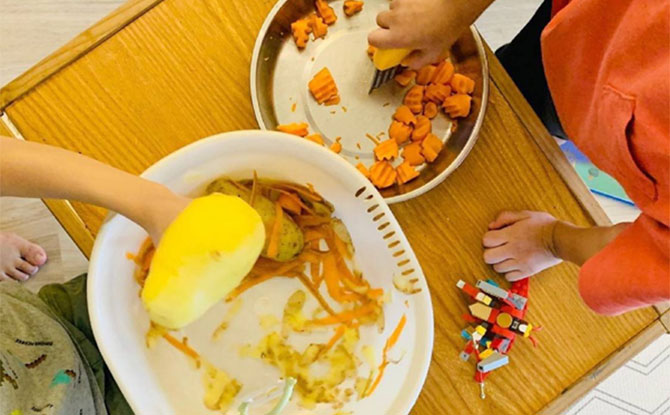
Choose a routine task and list down each step in Mandarin. For example, we could choose mealtime to start, it happens at least 3 times a day! 来洗手!干净了。坐下来,吃吧!吃饱了,把碗放进洗碗盆里,抹桌子。Subsequently, we can expand to cover morning and bedtime routines, what to do before we go out, after-school routine and more.
The predictability, repetition, associated actions and human connection in these verbal routines help us learn the associated words faster and in a meaningful way!
Easiest ways for parents to support their children in their bilingual learning?
Listen to music and sing together
I like to start by picking songs that my kids can relate too, like 《蝴蝶》、《蜜蜂》、《郊游》、《我是只小小鸟》- songs that we can sing whenever we go on outings. We can watch Youtube videos on it, listen while doing stuff at home, or I’ll teach them line by line as we walk outdoors! Youtube has lots of songs too like 贝瓦儿歌. Soundbooks and the Nursery Rhymes Project lyric books with audio in USB drive are excellent resources.
For my older kids, we’d listen to the songs over and over again. When we see something that reminds us of the song, we may sing it again! We’ll also check out the lyrics, I may write out the lyrics to model writing too.
Watching educational videos together
For slightly older kids, this is a really engaging way to support their bilingual learning.
We’ve collated a list of interesting educational videos that have been exceptionally helpful! Examples include 《字有道理》introducing the origin of simple characters,and 《米小圈动画汉字》covering word families and radicals which is a really meaningful way to learn lots of Chinese words.《卡其说 Kaki Says》、《Ah Boy》series are local productions that are really relatable. We enjoy love One of Us 《自己人》by Singapore Chinese Cultural Centre!
《三十六个字》 is an interesting old film about oracle bone script 甲骨文.
Provide entertainment options in Mandarin
It’s not always necessary to have learning goals tied to what we do. When something is entertaining and enjoyable, time flies and we just can’t get enough of it!
Over the years, we’ve watched many videos together like《可爱巧虎岛》Cute Qiao Hu Island,《十万个为什么》 100 000 Whys,《小叮当》Doraemon, and《幻影忍者》LEGO Ninjago. Little Fox Chinese has excellent videos – my kids’ favorite is 《西游记》series. My 7 year old loves it when his Chinese teacher plays it during snack breaks in class! There are plenty of Disney movies on Netflix with Mandarin Chinese audio, and corresponding books available in Chinese too. 《三个和尚》is a classic old animation, with lots of elements of Chinese culture and music too. We enjoy watching the original version! 《万物有光》is an amazing series of Mandarin nature documentaries – our favorites are the ones on how the pandas Kai Kai and Jia Jia came to Singapore, and on penguins!
I try to co-watch at least part of the episodes, so there’s fodder for chats, spin-off activities, follow-up reading together or related outings afterwards.
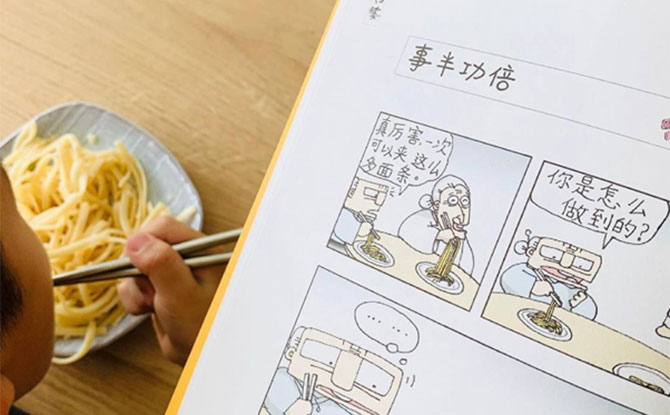
For kids, providing a steady stream of funny books and comics like 《开心小猪和大象哥哥》,《父与子》,《闹闹漫画》,《又是这一班》,《我的世界》Minecraft,《新鲜阿婆》is really helpful to motivate kids and create a strong reading habit. As their word recognition ability and reading stamina increase, we can expand their independent reading diet to introduce more breadth and depth with idioms, Chinese history, culture and classic literary works like 《四大名著》.
Find age-appropriate ways to engage your child in his or her unique high interests
Observe to find out what are your child’s high interests, and then find age-appropriate related resources in Mandarin for exposure! Intrinsic motivation is high, kids enjoy it, resist less, and we can often achieve more with a lot less effort.
For example, if your child loves drawing, check out drawing classes in Mandarin! Explore various drawing materials, Chinese calligraphy painting and more.
My 2 year old loves music! I’ve found that songs are such an effective way of providing a rich environment for my 2 year old toddler’s absorbent mind. Just by singing a song a few times, she can fill in some lyrics, and soon easily memorise them. We often have singalong sessions using our Nursery Rhymes Project lyric books, and sometimes I’d put my finger to the characters as we sing to help her make the connection that each syllable in Chinese corresponds to a character. At this stage, I focus a lot on 听说 listening and speaking with her, so we’ll talk about the things in the lyrics, and relate it to something we can see, touch, taste, smell or feel. When we see those things when we’re out and about, she may relate it back to the songs and sing them! For example, when we see a rickshaw in the National Museum, or see monkeys in the nature parks, she’d make the connection and sing 《三轮车》!
My 7 year old and I recently went on a night walk with Little Day Out, and there was a green Wagler’s Pit viper 瓦氏蝮蛇 hanging off a tree branch. He was very intrigued about the forked tongue that came out quickly, to smell the air. We watched our video in slow motion so many times over! From there we talk about the chinese character 蛇, 虫字旁 words, the chinese idiom 画蛇添足 from 林佩芬’s 《成语最加芬》podcast, talked about the 12 Chinese zodiac animals 十二生肖:鼠牛虎兔龙蛇马羊猴鸡狗猪,and read some related books like 《好饿的小蛇》、《十二生肖》、《杯弓蛇影》!
When we went to Lee Kong Chian Natural History Museum with our friends, he was so excited to see a Wagler’s Pit Viper specimen and connected it to the night walk! We also checked out other similar snakes, and he’s excited to see King Cobra in various books. Maybe one of these days, we’d head to Singapore Zoo to check out Reptopia with various reptiles and amphibians! I’m sure there will be environmental print in Chinese for us to read there.
For my 9 year old, there was a season where he particularly liked pandas and Minecraft, and he wanted to make a panda exhibit in the game! Subsequently, for our one-on-one time, we visited the panda exhibit at River Wonders. He took notes on what materials are needed to construct a panda exhibit, like stone for the ground, bamboo trees all around, lighting, wooden platform etc – and spent lots of time building it virtually from scratch. It’s so cool and we had lots of chats in Mandarin and English as well! We also watched a documentary in Mandarin of how Kai Kai & Jia Jia came to Singapore, how the Mandai Wildlife Reserves team learnt to take care of them. My son requested to buy a panda soft toy, and of course I said yes! In the 小羊上山 leveled reader series, there’s a heartwarming book on pandas that we love reading!
Regular Revision of Schoolwork and Targeted Practice
It may not sound very fun, but revision of schoolwork is really important! It doesn’t need to take long – we typically take about 10-15min every week to read through the textbook together, with them as the teacher role! We also try to make sentences orally with the terms learnt in each chapter.
Periodically, we’ll glance through their writing exercise books, spelling books and workbooks to see if there are areas that we need to take note of, and do targeted practice.
Sometimes they’ll share interesting things that the teacher or classmate said during lesson time. Other times, we may talk more about certain interesting words, or read books related to the lesson topics.
Thank you Linxin for sharing your precious thoughts and advice!
Be Intentional, Consistent and Persistent
One overarching message from Linxin is to be intentional, consistent and persistent so that we can nurture an appreciation for the Chinese language in our children. Little by little, we can influence and nurture their interest rather than have them avoid the challenge of being bilingual. While they may not comprehend the benefits of being bilingual when they are young, this skill will be a useful one in future.
For more tips on bilingual learning, follow Linxin on Instagram @mystorytreasury


